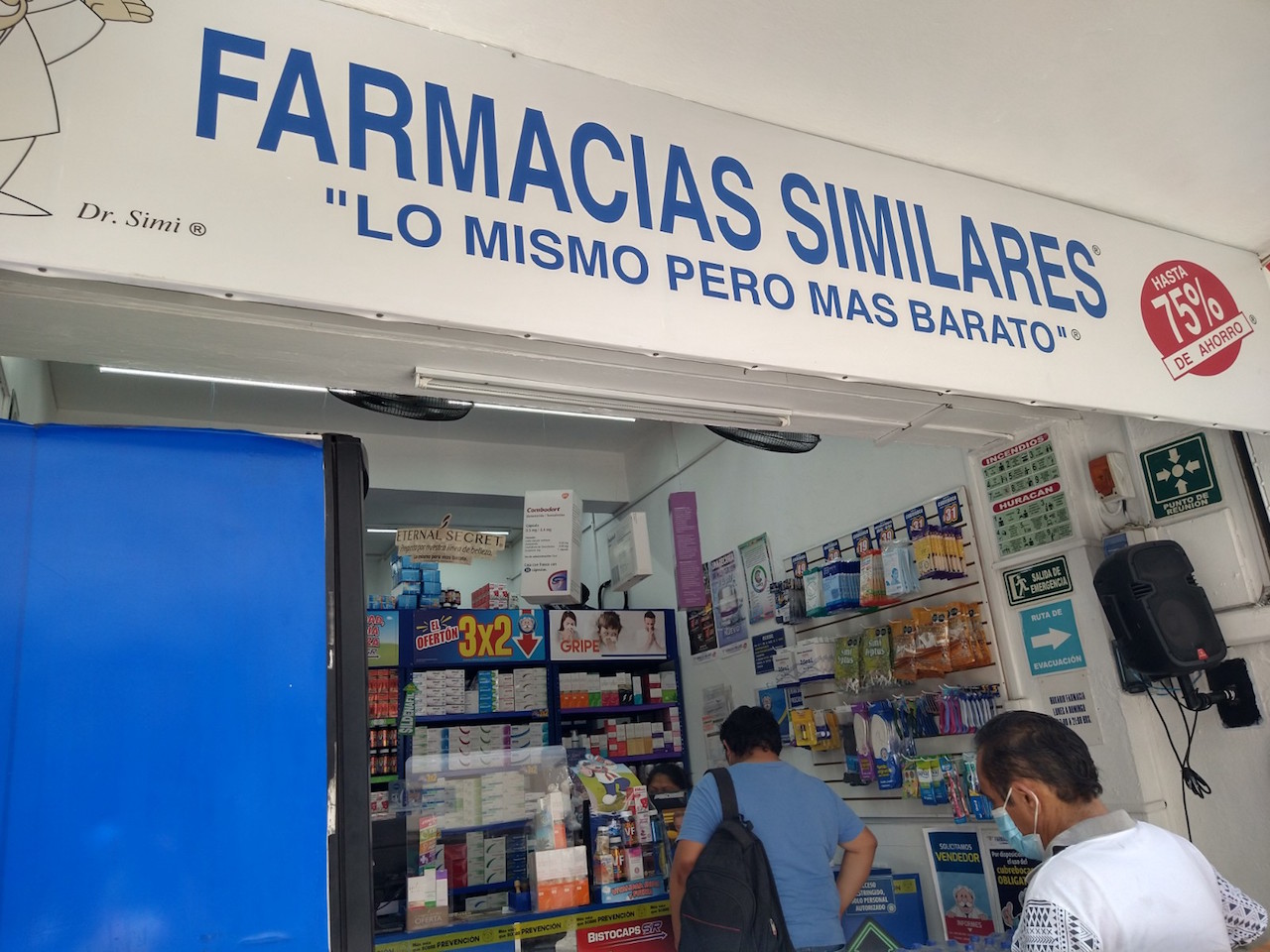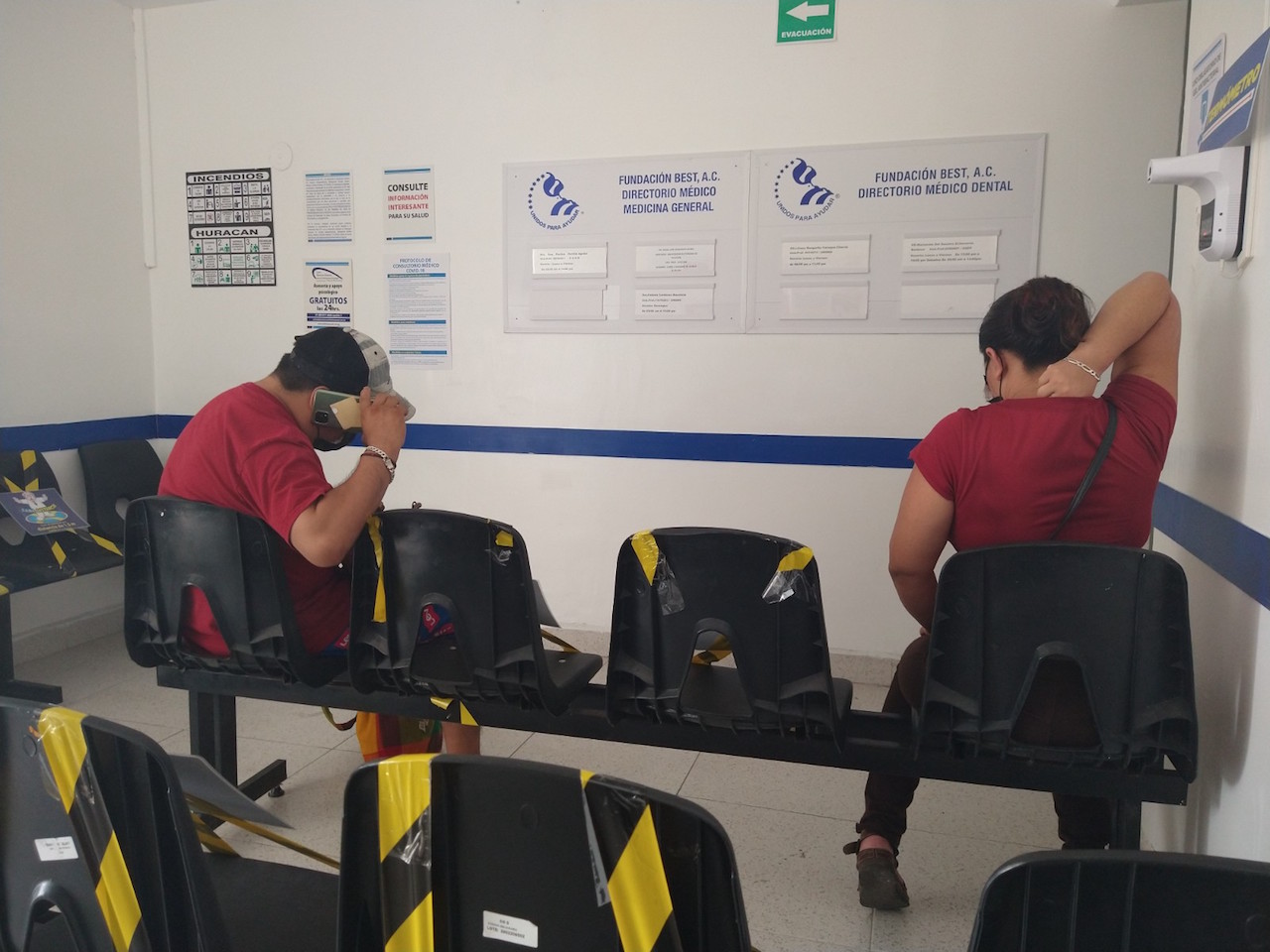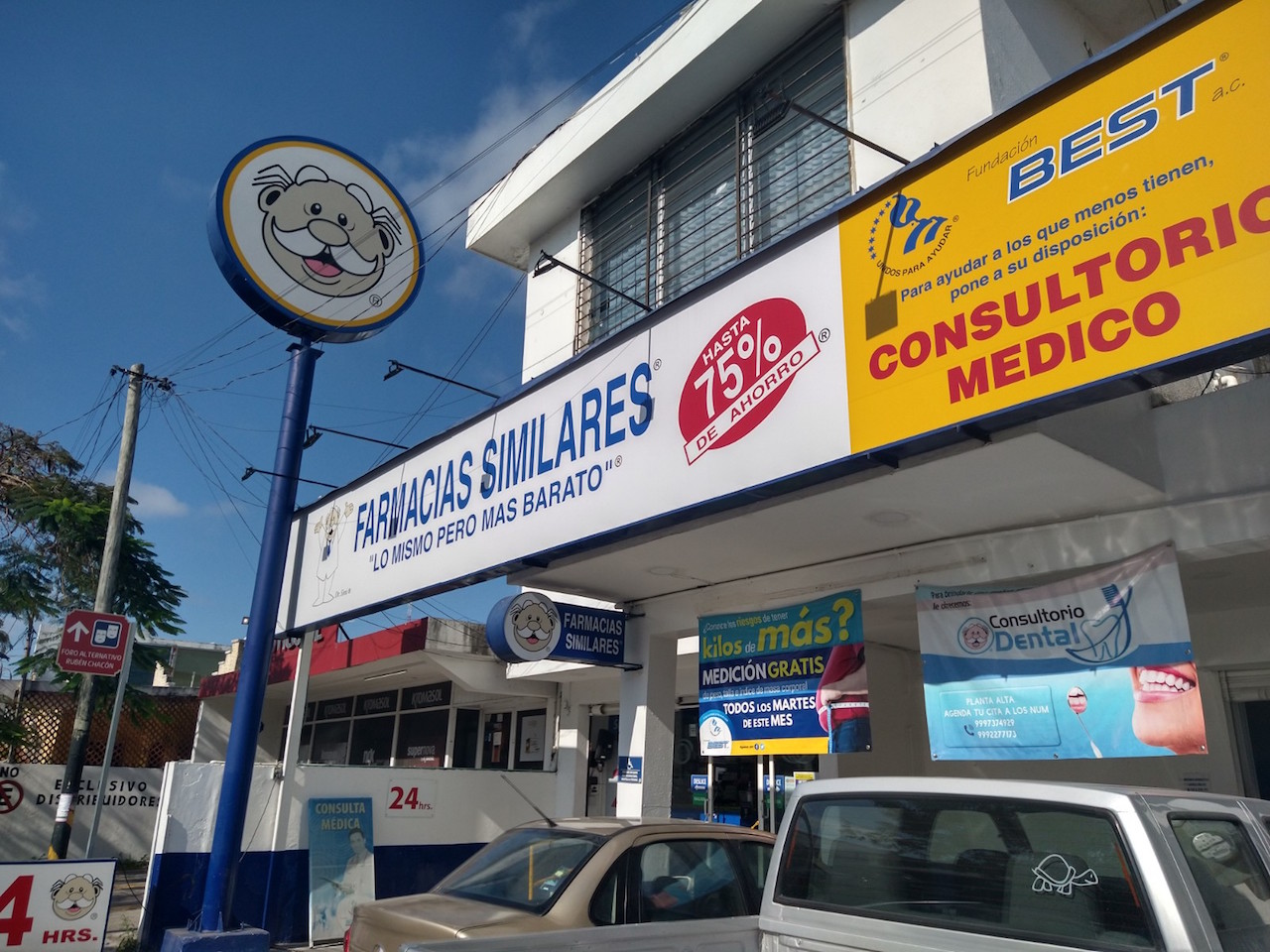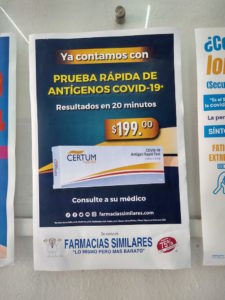As a US citizen, one of my major concerns for retirement was how I would access healthcare. I knew this would be tricky because my plan was to travel around the US and the world, which does not work with how the US healthcare system is set up.
I needed a way to have emergencies covered anywhere in the world, and to have a plan for what to do for more routine check ups and prescriptions. The former problem was solved by travel insurance that I discuss in detail here: What’s My Health Insurance Plan As A Nomad and Early Retiree?
However, I had to decide how I would deal with non-emergency costs going forward. For that, I turned to Medical Tourism, which is when you go to another country for medical care. Americans do this because most other countries have cheaper healthcare and better outcomes than our own. And some countries that fit this bill, such as México, are a short flight away.
So I looked into what countries are known for great and affordable medical care and saw people raving about México. In a post a few weeks ago, I described my very first foray into medical tourism, which was a $32 dental cleaning in Mérida. Today I’m going to talk about visiting doctors and filling prescriptions in Mérida. So let’s see if Medical Tourism in México is all that I expected it to be 🙂 .
Farmacia Similares
In Mérida, you can’t go more than 5 blocks downtown without seeing a Farmacia Similares. Their slogan is “Lo mismo pero más barato” or “The same but cheaper” and based on my experiences there, that’s completely accurate 🙂 . However, what might not be apparent, is that many of these pharmacies also have doctors! It’s basically an urgent care attached to a pharmacy where you see a doc, get a script and fill it all right there. I love the efficiency 🙂 .
Now it might be because my Spanish was nonexistent when I got to México, but I couldn’t for the life of me figure out which pharmacies had doctors in Mérida from their website. So I decided to just pop by and ask. I walked into the first Farmacia Similares I saw downtown, which was only a few blocks from my Spanish school.
Finding A Doctor
And with 4 total hours of Spanish class under my belt after the first day of class, I asked if they have a doctor at the pharmacy (“Tienes un médico aquí?“) Luckily I didn’t seem to offend anyone with my rudimentary Spanish or my use of the informal “tú” instead of the formal “ustedes.” They gestured down the street and I somehow picked up that they were saying a doctor was 2 blocks down at the very next Farmacia Similares.

So I set off and in a few minutes I arrived at the next Farmacia Similares (Location: Calle 65 #530). I walked up to the pharmacy to make sure I was in the right place (I was) and this time asked if their doctor spoke English (“El doctor habla ingles?” and the answer was no 🙂 . My 4 hour old Spanish was really going to get a workout that day!

Directly next to the pharmacy was a waiting room for the doctor. It had chairs set out with several blocked for social distancing. We settled in and chilled because it was a Monday during lunchtime, and there were 2 people ahead of me. I waited for about 40 minutes. 20 minutes per patient – not bad in my opinion for a mid-day walk in.
Then it was my turn and I went into the doctor’s office. I had my Google Translate app at the ready to translate our words. I was going to use their “Conversation” setting, but quickly learned that that wouldn’t work well with my mask and the doctor’s mask/visor combo. In addition, I didn’t realize that this function stops inputting information after a few sentences, WAY before the typing function. So I switched to typing in my symptoms and the doctor was very kind and patient with me.
He gave me a check up based on my symptoms, asked me some questions and then printed out a prescription that I could fill next door. Then I paid him for the visit. At all Farmacia Similares, a doctor’s visit costs $50 pesos or $2.50 USD. WOWZA. Heads up though! You have to have exact change to provide to the doctor. I’ll tell you how I figured that out during my next visit below (Spoiler: it’s embarrassing 🙂 ).
Filling A $1 Prescription
Here’s where my rudimentary Spanish finally caught up to me. I went to the pharmacy and handed them my printed prescription. I think they then asked me if I also wanted to be upsold to buy some Airborne, and I didn’t know what was going on, so after asking them to repeat themselves and still not getting it, I said yes. Oops!
I walked away with the 4 prescriptions my doctor recommended, which all together cost $2.50 total. This included one medicine I’ve gotten in the US for $60 even after pharmacy discounts. The Airborne equivalent cost me $7.50 and I don’t drink that sugary stuff. Oh well! Lesson learned: Don’t say yes to things I don’t understand 🙂 .
Visit #1 Review
Besides my language-based blunder, I had a fantastic time at my first doctor’s visit in México. Being able to be seen quickly despite walking in during lunch hour and having my prescription printed for clarity were awesome. Also, obviously the prices couldn’t be beat! I tried out a different pharmacy in town and the prices at the Farmacia Similares are way cheaper for the same exact medicine.
Finding An English Speaking Doctor: Visit #2 Review
A week or so after my first appointment, my Mom went to a different Farmacia Similares. She visited the one at Calle 65, #471 and saw Dr. Juan Carlos Balan Tamay, who spoke English. He also hilariously had an uncle from Georgia (where my Mom lives). She had an amazing experience. Similar to me, she was in and out quickly without an appointment, received a printed prescription and was able to fill her prescriptions next door and be done.
Visit #3 Review
This was my final visit to a Farmacia Similares doctor while in Mérida (Location: Calle 86 #497 B).

When I arrived, there was one person already seeing the doctor so I waited about 10 minutes for them to come out. I went in and told the doctor my issue in Spanish. He responded with a mix of English and Spanish, did an exam and then wrote out a prescription for me.
I mention that the prescription was handwritten because our previous two visits had provided printed prescriptions, which are obviously more easy to read. As a result of the handwritten prescription, the pharmacist asked me questions to determine what exactly the prescription said. Luckily I was several weeks into my intensive Spanish course at that point and could help a little with their questions, but I would have preferred a printed prescription for clarity.
The other funny thing that happened is that this was the first time I didn’t have exact change to pay the $50 pesos for the doctor’s visit. This is when I learned that exact change is required. The doctor told me to come back with the money when I had it, I went to the pharmacy to see if I could pay for the doctor there with my credit card (no) or if I could get change back from my purchases (yes).

So after paying for my prescriptions, I had to go back to the doctor’s office, which of course went from basically empty to full, and try to explain that I wasn’t cutting the line, but trying to pay the doctor back. He had a patient at the time so I didn’t know what to do 🙂 . Slip the money under the door? Seems weird and could be missed. Knock while the doctor has a patient? Seems rude.
After much deliberation I knocked, the doctor came out and said one second, finished with the patient, came back and took my money and I walked out once again. Ugh that was enough social blunders for a week so I quickly retreated back to my life of relaxing by the pool while talking to no one 🙂 . All that to say, avoid my mistakes and bring exact change.
Conclusion
So those were our experiences visiting urgent care doctors and getting prescriptions filled in Mérida, México. Farmacia Similares really came in clutch and I’m happy they were recommended to me. Outside of urgent care, doctors and prescriptions, they also sell at home covid antigen tests for $7.50-$10 depending on the brand you get so heads up about that.

Anyway, my first time trying out the ‘medical’ in medical tourism went really well and gave me hope for my supplemental plan to get medical care outside the US. I hope this was helpful if you were looking for other options as well!
Have you received medical care in another country?
Discover more from A Purple Life
Subscribe to get the latest posts sent to your email.

great story and hope you fell great now. This gives me confidence that I can go ok in retirement in other countries, too.
Question about the quality of pills received: did you notice any difference between the ones from mexico and same from USA? why I am asking: the only treatment I have in house is ventolin to use when it needs, and I used to buy it cheaper from my trips in cheaper countries and…. I found there is a difference of efficiency. Whatever, I keep a strong severe life hygiene so I reduced the asthma attacks at 3-4 per year so hope never investigate the differences and the doctors to be visited just for annual checks :))
Thank you! I’m feeling good now. And that’s interesting. All the medicine I’ve received is the exact same as the medicine I got in the states as far as I can tell. In fact, I’m also asthmatic and the Ventolin/Albuterol/Salbutamol has been the exact same here as well.
Nice write-up! It’s been so interesting seeing FIREtirees’ experiences with medical tourism. I think China has a similar set-up, in that you pay at each step of a visit to a doctor or hospital, and at similar low prices, e.g. several dollars for the doctor’s time and diagnosis, several dollars for an X-ray, etc. In the UK, you pay nothing, but you would wait a long time for an appointment with your GP, or to be seen in A&E (the ER) if your issue isn’t immediately life-threatening. Many (most?) prescriptions are subsidised, so you only pay a set amount per thing depending on what it is. Medication is around £10.
Funny how for some situations (I’m talking general life things like colds or rashes or a stubbed toe lol) paying out of pocket overseas is cheaper than paying at home. Seems counterintuitive somehow. The US does seem to be a special case, your hospital bills are legendary 😉
Glad you and your mum had a great experience in Mexico! I’ve heard pretty good things about their healthcare.
Very interesting!! Thank you for sharing 🙂 . And yeah it makes not a lot of sense to me, but the US is indeed is silly outlier in all this.
Great info, thank you so much! To make sure I understand correctly, the prices you are paying out of pocket is without insurance? I know you bought internal travel insurance so I don’t know if that’s your cost AFTER using international insurance?
Correct – this is all without insurance. I don’t contact my travel insurance to cover small prices because I can’t be bothered to be honest 🙂 . I’m so glad it was a helpful post!
I love how much Spanish you are incorporating in your posts. I feel like it shows that your brain is getting more trained in the culture that you live in. I only spent 3 weeks in Mexico on my last trip but loved how immensely immersion changed my style of communicating. Also the Pimsleur audio lessons are awesome!
I’m experimenting with medical tourism accidentally. I’m considered an overseas visitor in Australia right now since moving in October 2021. Since I’m not a citizen, I don’t qualify for their Medicare. So I have to get private insurance. The monthly cost isn’t too bad around ~$120/ month. I just had an ankle arthroscopy that without insurance would have cost $10,000- $14,000. My hospital bill was $0.
Downside to AUS private health insurance is that they make you wait a year for any pre-existing conditions (which this was). So the health insurance company originally wasn’t going to cover it. However, there’s a bit of a loop hole. If you can show that you’ve been covered by a private health insurance company at least a year earlier then you don’t have to serve the waiting period. I drafted an official looking letter showing all my coverage in the U.S and then Boom! No longer need a waiting period.
I love this concept of medical tourism. I’m sure that I would have had to pay at least $2000 for a deductible and then 80% of the hospital bills would have reached my out of pocket maximum of $5000 in no time. Not to mention I already spent almost $4000 (+monthly premiums) in the U.S. with this issue previously that was for 2 dr consults, 1 set of x-rays, 1 joint injection, 1 MRI, 2 follow up PA appointments, and 2 physical therapy appointments.
Thank you! And wow – that’s wild about AUS and great to know about the loophole 🙂 .